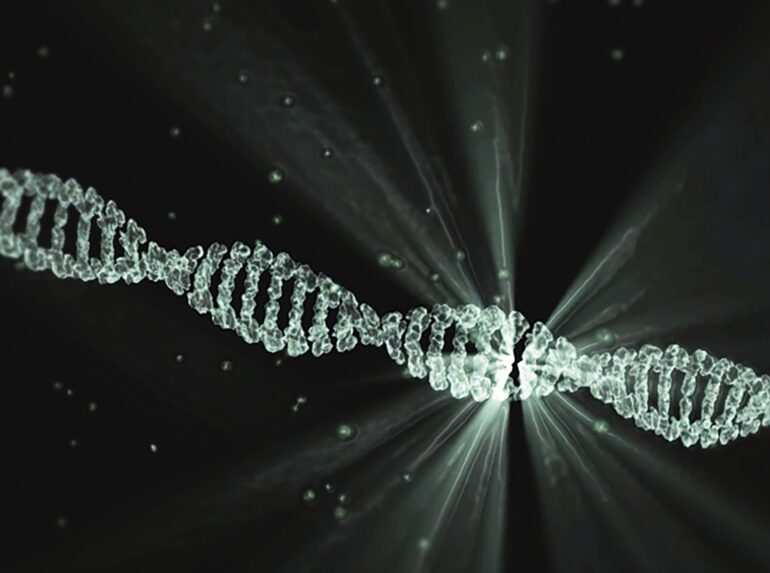TL;DR:
- Researchers at Oak Ridge National Laboratory (ORNL) combine quantum biology and AI in CRISPR Cas9 genome editing.
- Traditional CRISPR models struggled with microbes due to differences in chromosomal structures.
- Quantum biology insights into electron distribution improve guide RNA design for microbes.
- An explainable AI model, “iterative random forest,” enhances guide RNA selection.
- The model’s validation through experiments on E. coli demonstrates its effectiveness.
- ORNL plans to refine the model further for diverse microbial species.
- The research’s implications extend to drug development and precision genome targeting.
- Improved CRISPR models advance functional genomics and bioenergy innovation.
Main AI News:
In a groundbreaking convergence of quantum biology, artificial intelligence (AI), and bioengineering, researchers at Oak Ridge National Laboratory (ORNL) have pioneered a new era in CRISPR Cas9 genome editing. This revolutionary approach has the potential to redefine the way we manipulate the genetic code of organisms, especially microbes, to generate renewable fuels and chemicals efficiently.
CRISPR technology has long been hailed as a powerful instrument in the field of bioengineering, offering the ability to modify an organism’s genetic code for enhanced performance or to rectify mutations. However, the efficacy of the CRISPR Cas9 tool in microbes has faced limitations. Traditional models for predicting effective guide RNAs, which are essential for CRISPR tool precision, were predominantly built using data from model species, such as mammals and fruit flies. These models exhibited inconsistent efficiency when applied to microbes, given the vast differences in chromosomal structures and sizes.
Microbes Take Center Stage
Carrie Eckert, the leader of ORNL’s Synthetic Biology group, highlights the issue: “Most CRISPR tools have been tailored for mammalian cells or model species, which possess vastly different chromosomal structures compared to microbes.” The research at ORNL sought to validate the anecdotal evidence that models for CRISPR Cas9 machinery behave differently when applied to microbes.
To enhance the modeling and design of guide RNAs, ORNL scientists delved into the fundamental realm of cell nuclei, where genetic material resides. They turned to quantum biology, a field that straddles molecular biology and quantum chemistry, investigating the impact of electronic structures on the chemical properties and interactions of nucleotides, the building blocks of DNA and RNA.
Quantum Insights for Precision Editing
Erica Prates, a computational systems biologist at ORNL, elucidates the significance of electron distribution in molecules: “Electron distribution profoundly affects reactivity and conformational stability, including the likelihood of the Cas9 enzyme-guide RNA complex effectively binding with the microbe’s DNA.“
Harnessing Explainable AI in CRISPR
The researchers devised an explainable artificial intelligence model termed “iterative random forest.” This model was trained using a dataset of approximately 50,000 guide RNAs targeting the genome of E. coli bacteria, while incorporating quantum chemical properties. This novel approach, detailed in the journal Nucleic Acids Research, unveiled critical insights into nucleotides, enabling the selection of superior guide RNAs.
Prates explains the model’s significance: “The model has allowed us to uncover essential molecular mechanisms governing guide RNA efficiency, providing us with a wealth of molecular information to enhance CRISPR technology.”
Validation through Cutting-Edge Experiments
ORNL researchers rigorously validated the explainable AI model by conducting CRISPR Cas9 cutting experiments on E. coli using a comprehensive selection of guides chosen by the model. This approach provided researchers with a profound understanding of the biological mechanisms driving results, in stark contrast to the often inscrutable “black box” algorithms associated with deep learning models.
Jaclyn Noshay, a former ORNL computational systems biologist and first author of the paper, emphasizes their goal: “We aimed to refine our understanding of guide design rules to optimize cutting efficiency in microbial species, given the limitations of models trained across biological kingdoms.”
The Future of CRISPR Cas9
The explainable AI model, with its thousands of features and iterative nature, was developed with the assistance of the Summit supercomputer at ORNL’s Oak Ridge Leadership Computer Facility. Eckert’s synthetic biology team plans to collaborate with computational science colleagues at ORNL to further enhance the microbial CRISPR Cas9 model, incorporating data from lab experiments and diverse microbial species.
Quantum Insight for All Species
Considering quantum properties paves the way for enhanced Cas9 guide design across all species. Eckert underscores the broader implications: “This research extends beyond microbes and can impact a human scale. Whether it’s drug development or targeting specific genomic regions with CRISPR, precision hinges on the accuracy of our models.”
Advancing Functional Genomics
Refining CRISPR Cas9 models offers scientists a higher-throughput pipeline for linking genotype to phenotype, a field known as functional genomics. The implications of this research extend to the work of the ORNL-led Center for Bioenergy Innovation (CBI), where it can improve bioenergy feedstock plants and bacterial fermentation of biomass.
Eckert concludes, “Our predictions for guide RNA are substantially improving through this research. As we deepen our understanding of the underlying biological processes and gather more data, our research will become even more precise and efficient.”
Paul Abraham, a bioanalytical chemist at ORNL and leader of the DOE Genomic Science Program’s Secure Ecosystem Engineering and Design Science Focus Area (SEED SFA), which supported the CRISPR research, shares his excitement: “Our research aims to predictively modify DNA across a broader spectrum of organisms using CRISPR tools. This study represents an exciting leap toward understanding how we can avoid costly ‘typos’ in an organism’s genetic code, and I eagerly anticipate further enhancements as we continue to leverage explainable AI modeling and gather additional training data.”
Conclusion:
The fusion of quantum biology and AI in CRISPR genome editing represents a significant leap in precision and efficiency. This breakthrough technology has broad implications, from optimizing drug development to advancing bioenergy solutions, and it has the potential to reshape the market for genetic manipulation tools and services, offering more accurate and faster results for a wide range of applications.

